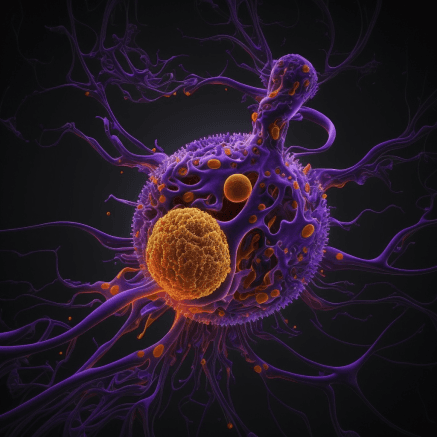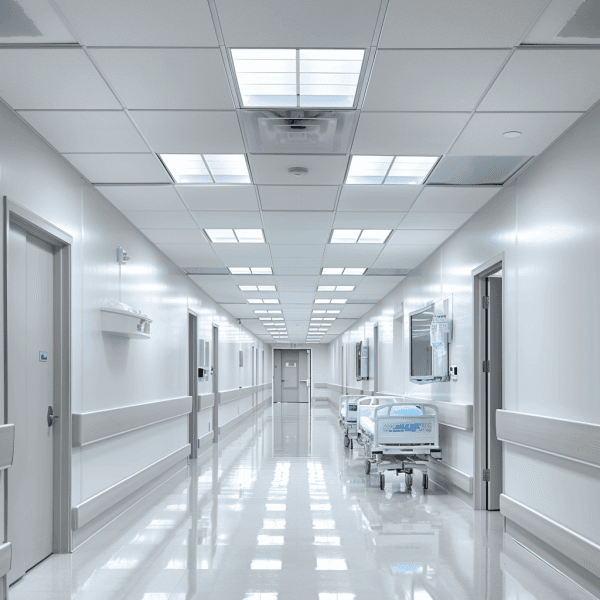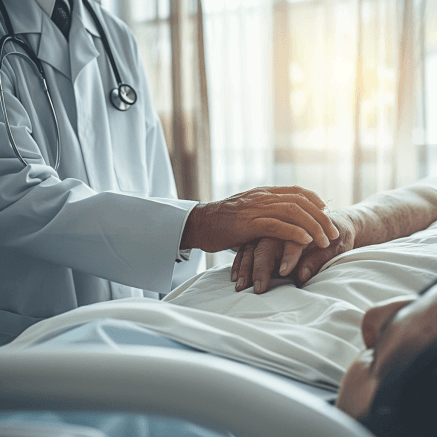
In-Depth Guide to Breast Cancer Treatment in the UAE
10 Jul, 2024
 Healthtrip Team
Healthtrip Team Are you or a loved one seeking thorough breast cancer treatment options in the UAE? Facing breast cancer treatment decisions can be daunting, particularly in a new healthcare environment. This guide is your compassionate companion in exploring breast cancer treatment in the UAE. Uncover leading hospitals, personalized treatment plans, and supportive care services that prioritize your well-being. With this information, navigate your path towards healing with confidence and clarity.
Symptoms of breast cancer
Breast cancer can show up in different ways, and it's good to be aware of what to look out for:
Most popular procedures in India
a. Lump or Thickening: Sometimes you might feel a lump or thickening in your breast or underarm. It could feel different from the surrounding tissue and doesn't seem to go away.
Wellness Treatments
Give yourself the time to relax
Lowest Prices Guaranteed!

Lowest Prices Guaranteed!
b. Change in Size or Shape: If one breast starts to look or feel different in size or shape compared to the other, it's worth checking out.
c. Pain or Discomfort: While breast cancer usually isn't painful at first, some people do feel discomfort or tenderness in their breasts.
d. Skin Changes: Keep an eye out for any unusual changes in the skin of your breast, like redness, dimpling, or puckering. Sometimes it can look like the skin is pulled in.
e. Nipple Changes: Watch for changes in your nipples, such as them pulling inward, developing a rash, or having crusty or bloody discharge that's not milk.
f. Swelling or Warmth: If your breast suddenly swells up, feels unusually warm, or has redness that doesn't go away, it could be a sign of a rare but more aggressive form of breast cancer.
g. Nipple Issues: Pay attention if your nipple starts to pull in or go flat when it used to stick out normally.
h. Unexpected Discharge: If you notice clear or bloody fluid coming out of your nipple without squeezing it, it's best to get it checked.
i. Skin Texture Changes: In some cases, the skin on your breast might start to look like the peel of an orange (peau d'orange), which is a sign to see your doctor.
Remember, these symptoms can also be caused by other conditions, but it's always smart to get anything unusual checked out by a healthcare provider. Early detection is key, so regular self-checks and mammograms are important for catching breast cancer early when treatment is most effective.
Diagnosis of breast cancer in the UAE
1. Clinical Examination: It starts with a thorough check-up by a healthcare provider who examines your breasts and nearby lymph nodes for any signs like lumps, changes in size or shape, skin dimpling, or nipple abnormalities.
2. Imaging Tests:
- Mammography: This X-ray procedure is key for breast cancer screening. It helps spot suspicious areas such as masses or tiny calcium deposits.
- Ultrasound: Sometimes, ultrasound is used alongside mammography to get a clearer view of specific areas that need more scrutiny.
- MRI (Magnetic Resonance Imaging): In special cases, like dense breast tissue or high-risk individuals, MRI may be recommended for a more detailed examination.
3. Biopsy: If anything unusual is found during imaging or examination, a biopsy is done to collect tissue samples from the suspicious area:
- Fine Needle Aspiration (FNA): A thin needle draws out cells or fluid from a lump or lymph node.
- Core Needle Biopsy: A larger needle takes a small piece of tissue for deeper analysis.
- Surgical Biopsy: Sometimes, surgery is needed to remove a larger sample of tissue for a more accurate diagnosis.
4. Pathology Evaluation: These tissue samples are sent to a lab where a pathologist examines them under a microscope. They check for cancer cells, identify the type of cancer (like ductal or lobular carcinoma), and assess hormone receptor status and HER2 protein expression.
5. Staging: Once cancer is confirmed, staging tests help determine how far it has spread:
- Imaging Tests: CT scans, PET scans, bone scans, or MRIs may be used to check lymph nodes, bones, or other organs.
- Lymph Node Biopsy: This helps see if cancer has reached nearby lymph nodes.
6. Genetic Testing: Some individuals may undergo genetic testing to check for specific mutations (like BRCA1 or BRCA2) that increase breast cancer risk or affect treatment decisions.
7. Multidisciplinary Team: Treatment planning involves a team of specialists (oncologists, surgeons, radiologists, pathologists) who collaborate to create a personalized treatment plan based on your specific situation and preferences.
8. Support and Education: Throughout the process, you'll receive guidance and support to understand your diagnosis, treatment options, and what to expect. This includes emotional support, access to counselling, and resources to help manage the practical aspects of living with breast cancer.
The process is designed to provide thorough care and support, ensuring you receive the best possible treatment tailored to your needs and circumstances. Early detection and personalized care are key to improving outcomes and navigating breast cancer diagnosis effectively.
Treatment Options for Breast Cancer Treatment in the UAE
A. Surgery:
a. Lumpectomy: This procedure involves removing the cancerous tumour along with a small margin of surrounding healthy tissue. It aims to preserve the breast as much as possible while effectively treating localized breast cancer.
b. Mastectomy: There are different types of mastectomy:
- Simple Mastectomy: Removes the entire breast tissue, including the nipple and areola.
- Modified Radical Mastectomy: Removes the breast tissue, lymph nodes under the arm (axillary lymph nodes), and sometimes, chest wall muscles under the breast.
B. Radiation Therapy:
b. Brachytherapy: Also known as internal radiation therapy, brachytherapy involves placing radioactive sources (seeds or pellets) directly into the breast tissue near the cancer site. This allows for targeted delivery of radiation while minimizing exposure to surrounding healthy tissues.
C. Chemotherapy:
b. Neoadjuvant Chemotherapy: Given before surgery (neoadjuvant therapy) to shrink large tumours, making them easier to remove surgically. This approach may also help to assess the response of the tumor to chemotherapy drugs.
D. Hormone Therapy:
b. Aromatase Inhibitors: These medications lower estrogen levels in postmenopausal women by blocking the enzyme aromatase, which converts androgens into estrogen. Aromatase inhibitors are used primarily in postmenopausal women with hormone receptor-positive breast cancer.
E. Targeted Therapy:
b. Tyrosine Kinase Inhibitors: Drugs like Lapatinib block specific enzymes (tyrosine kinases) involved in the growth and spread of cancer cells in HER2-positive breast cancers. These medications are often used in combination with other treatments.
F. Immunotherapy:
a. Checkpoint Inhibitors: Immunotherapy drugs such as pembrolizumab or atezolizumab work by targeting checkpoints on immune cells or cancer cells, helping the immune system recognize and attack cancer cells more effectively. Immunotherapy is an evolving field in breast cancer treatment and is currently being studied in clinical trials.
G. Clinical Trials:
Clinical trials offer access to new treatment approaches, novel drug combinations, or innovative therapies that are not yet widely available. Participation in clinical trials contributes to advancing breast cancer research and improving treatment outcomes for future patients.
H. Supportive Care:
b. Symptom Management: Healthcare providers use medications, therapies, and supportive interventions to manage treatment-related side effects such as pain, nausea, fatigue, and emotional distress.
Each treatment option is carefully chosen based on the type and stage of breast cancer, as well as individual patient factors such as overall health and personal preferences. Treatment plans are developed collaboratively by a multidisciplinary team of oncologists, surgeons, radiation oncologists, pathologists, and other specialists to provide comprehensive care and support throughout the treatment journey.
Leading Hospitals in the UAE for Breast Cancer Treatment in the UAE
1. HMS Al Garhoud Hospital
- Established Year: 2012
- Location: Al Garhoud, Near Millennium Airport Hotel - Dubai - United Arab Emirates, United Arab Emirates
About The Hospital:
- Number Of Beds: 117
- Operation Theatres: NA
- Number Of Surgeons: 5
- Fully equipped operating rooms and secondary operating rooms
- Obstetrics and gynaecology services beds
- Neonatal intensive care unit equipped with the latest technology (starting from 24 weeks)
- Emergency department operating around the clock
- Intensive care units equipped with the latest equipment
- The HMS Health and Medical Services Group's flagship hospital
- Offers world-class treatment with exceptional results
- Aims for the highest medical quality standards
- Located in the Al Garhoud neighbourhood of Dubai
- Easily accessible to patients from all regions of the UAE and GCC nations
- Reputation for delivering high-calibre care in a secure, cosy, and modern setting
HMS Al Garhoud Hospital offers a wide range of medical services, including anaesthesia, cardiology, dermatology, emergency care, gastroenterology, general surgery, intensive care, internal medicine, nephrology, neurology, obstetrics & gynaecology, ophthalmology, oncology, and many more.
- Location: Abu Hail Road, Behind Ministry of Environment and Water, P.O.Box: 15881, Dubai, UAE, United Arab Emirates
- Year Established: 1970
About The Hospital
- One of the largest private hospitals in Dubai
- JCI accredited
- Over 200-bed capacity
- Receives more than 500 patients daily
- More than 65 internationally qualified physicians
- Private and shared rooms with modern amenities
- 24/7 room service with a variety of food options
- Specialized menus prepared by experienced dieticians
- Blood bank services are available 24/7
- Safety measures and patient comfort prioritized
- Specialists in various fields including Cardiology, Dermatology, Neurology, Endocrinology, Gastroenterology, Nephrology & Dialysis, Pediatrics & Neonatology, Rheumatology, Psychiatry and Behavioral Neurosciences, Asthma & Chest Clinic, Allergy Clinic, Rehabilitation and physiotherapy, Post COVID-19 Rehabilitation, Andrology, General & Laparoscopic Surgery and more.
How can HealthTrip assist with your treatment?
If you're seeking Breast Cancer Treatment, let HealthTrip be your compass. We support you throughout your medical journey with the following:
- Access to top doctors in 38+ countries and the largest health travel platform.
- Partnerships with 1500+ hospitals, including Fortis, Medanta, and more.
- Treatments in neuro, cardiac care, transplants, aesthetics, and wellness.
- Post-treatment care and assistance.
- Teleconsultations with leading doctors at $1/minute.
- Over 61K patients served.
- Access Top treatments and packages, such as Angiograms and many more.
- Gain insights from genuine patient experiences and testimonials.
- Stay updated with our medical blog.
- 24/7 unwavering support, from hospital formalities to travel arrangements or emergencies.
Hear from our satisfied patients.
In conclusion, navigating breast cancer treatment in the UAE requires informed decision-making and a supportive network. By understanding the available treatment options, accessing local resources, and engaging with healthcare professionals, individuals can empower themselves to make confident choices about their health. Remember, you are not alone in this journey. Seek support from loved ones and healthcare providers, stay informed about advancements in treatment, and take proactive steps towards recovery. Together, we can strive towards better outcomes and support each other through every step of the journey.
Related Blogs

Unparalleled Medical Care at Burjeel Medical City, Abu Dhabi
Experience the best of medical care and hospitality at Burjeel

Pancreatic Cancer Treatment Options in the UK: A Guide for Patients from Russia
Facing a diagnosis of pancreatic cancer can be overwhelming, especially

Top Hospitals for Bone Marrow Transplant in UAE
When facing the challenging journey of a bone marrow transplant,

Top Hospitals for Hormone Therapy in Cancer Treatment in UAE
Hormone therapy has become a cornerstone in the treatment of

Dubai’s Top Eye Care Hospitals
Let’s face it—life in Dubai moves fast, and eye health

Robotic-Assisted Radiation Therapy: Innovations in UAE Cancer Treatment
Cancer treatment has evolved dramatically over the years, with technological











